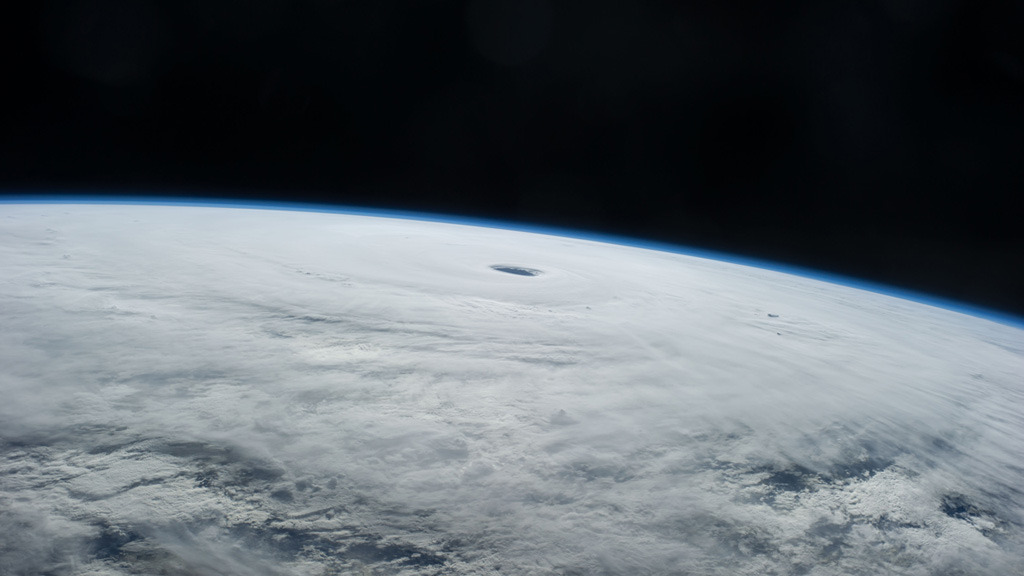GPM Explores Typhoon Vongfong
Animation revealing a swath of GPM/GMI precipitation rates over Typhoon Vongfong. As the camera moves in on the storm, DPR's volumetric view of the storm is revealed. A slicing plane moves across the volume to display precipitation rates throughout the storm. Shades of green to red represent liquid precipitation extending down to the ground.
This video is also available on our YouTube channel.
On October 9, 2014 (0248UTC) the Global Precipitation Measurement (GPM) mission's Core Observatory flew over Typhoon Vongfong as it headed towards Japan. At this point, the storm had weakened to a category 4 typhoon with maximum sustained winds at 150 miles per hour (mph), down form a category 5 typhoon on October 8th.
The GPM Core Observatory carries two instruments that show the location and intensity of rain and snow, which defines a crucial part of the storm structure – and how it will behave. The GPM Microwave Imager sees through the tops of clouds to observe how much and where precipitation occurs, and the Dual-frequency Precipitation Radar observes precise details of precipitation in 3-dimensions.
For forecasters, GPM's microwave and radar data are part of the toolbox of satellite data, including other low Earth orbit and geostationary satellites, that they use to monitor tropical cyclones and hurricanes.
The addition of GPM data to the current suite of satellite data is timely. Its predecessor precipitation satellite, the Tropical Rainfall Measuring Mission, is 18 years into what was originally a three-year mission. GPM's new high-resolution microwave imager data and the unique radar data ensure that forecasters and modelers won't have a gap in coverage. GPM is a joint mission between NASA and the Japan Aerospace Exploration Agency. All GPM data products can be found at NASA Goddard's Precipitation Processing Center website http://pps.gsfc.nasa.gov/.

Color bar for frozen precipitation rates (ie, snow rates). Shades of cyan represent low amounts of frozen precipitation, whereas shades of purple represent high amounts of precipitation.

Color bar for liquid precipitation rates (ie, rain rates). Shades of green represent low amounts of liquid precipitation, whereas shades of red represent high amounts of precipitation.

Print resolution still of the Earth at night overlooking Eastern Asia.

Print resolution still of GPM's pass over Typhoon Vongfong and precipitation over the western Pacific Ocean

Print resolution still of GPM GMI and DPR data, displaying only the high density regions of the storm.

Print resolution still of GPM GMI and DPR data, displaying high and mid-level density regions of the storm.

Print resolution still of GPM GMI and DPR data, displaying high to low level density regions of the storm.

Print resolution still of Typhoon Vongfong being scanned through the center of the DPR data showing the inner volumetric rain rates.

Print resolution still of Typhoon Vongfong being scanned through the center of the DPR data showing the inner volumetric rain rates.

Print resolution still showing a side on view of Typhoon Vongfong on October 9, 2014 at 02:48 UTC.
Credits
Please give credit for this item to:
NASA's Scientific Visualization Studio
-
Animators
- Kel Elkins (USRA)
- Alex Kekesi (Global Science and Technology, Inc.)
- Greg Shirah (NASA/GSFC)
-
Producers
- Ryan Fitzgibbons (USRA)
- Rani Gran (NASA/GSFC)
-
Scientists
- Gail Skofronick Jackson (NASA/GSFC)
- Dalia B Kirschbaum (NASA/GSFC)
- George Huffman (NASA/GSFC)
-
Project support
- Laurence Schuler (ADNET Systems, Inc.)
- Ian Jones (ADNET Systems, Inc.)
Release date
This page was originally published on Tuesday, October 14, 2014.
This page was last updated on Tuesday, November 14, 2023 at 12:05 AM EST.
Missions
This visualization is related to the following missions:Series
This visualization can be found in the following series:Datasets used in this visualization
-
Rain Rates (Surface Precipitation) [GPM: GMI]
ID: 822Credit: Data provided by the joint NASA/JAXA GPM mission.
See all pages that use this dataset -
Volumetric Precipitation data (Ku) [GPM: DPR]
ID: 830Credit: Data provided by the joint NASA/JAXA GPM mission.
See all pages that use this dataset
Note: While we identify the data sets used in these visualizations, we do not store any further details, nor the data sets themselves on our site.
